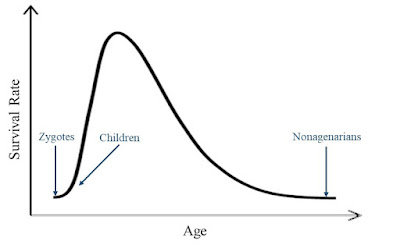Nearly half of all fertilized eggs fail to implant.
[Esta publicación está disponible en español aquí.]
The below blog post is also available as a recording here:
Many many many more hundreds of eggs are fertilized than become humans. Eggs get fertilized—by that I mean sperm get accepted by ova—a lot. But that’s not all you need. You have to attach to the uterine wall, the inside of a womb.
It’s true that a large proportion—possibly even up to half—of zygotes never implant and instead pass through the woman and die. I’m just not sure why people think this fact undermines the claim that human zygotes are human organisms. We don’t decide whether an entity is an organism based on how easily that entity dies. Consider the fact that as recently as the 1800s over 40% of children between birth and age 5 died. Despite their high mortality rate, those children were clearly still human organisms.
Consider also that very elderly people die more easily than younger people. If we plotted the human life cycle against our survival rates, it might look something like this (this is not an official graph, just a rough drawing to illustrate the point):
There are developmental stages when human organisms have lower survival rates. That’s true. I’m just not sure what it has to do with whether those entities are human organisms. Elderly people, very young children, and zygotes all die more easily than people my age, and they are all still human organisms.
If you appreciate our work and would like to help, one of the most effective ways to do so is to become a monthly donor. You can also give a one time donation here or volunteer with us here.


Leave a Reply
Want to join the discussion?Feel free to contribute!